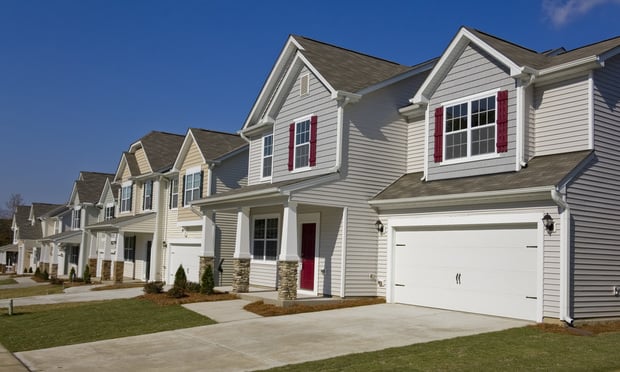➤➤ Join the GlobeSt.APARTMENTS (formerly RealShare) conference October 29-30 in Los Angeles. The event will analyze the opportunity in the emerging trends and conditions of the multifamily market. Don't miss out on joining the 1000+ of the industry's top owners, investors, developers, brokers and financiers as they gather for THE MULTIFAMILY EVENT OF THE YEAR! Click here to register and view the agenda.
WASHINGTON, DC—The Federal Housing Finance Agency has just made some major changes to the lending cap for Fannie Mae and Freddie Mac. It has increased them to $100 billion per agency for five quarters, as well as eliminated the uncapped categories. The FHFA will also require that 37.5% of agency lending be "mission-driven, affordable-housing" loans.
What this means for green loans, in short, is that their previous exclusions from the cap no longer apply. This is a significant development as agency lenders in 2018 sold nearly $80 billion in uncapped loans. The net result is that the $100 billion, five-quarter cap will allow for lending volume similar to the past 12 months.
It should be noted that the agencies have other incentives to make green loans besides closing on uncapped business. In fact, Fannie Mae offered a green loan program before the FHFA excluded them from the cap. The big question is how Fannie and Freddie will implement these programs based on the new FHFA policies.
Essentially, all stakeholders benefit from a green loan. Fannie Mae and Freddie Mac have successfully securitized these loans as green bonds to investors who understand the importance of efficiency in housing. Borrowers appreciate a lower interest rate over the life of the loan. Tenants receive the benefit of lower utility bills, because building owners are incentivized to invest capital in water and energy efficiency improvements. If affordability is the objective, then incentivizing building owners towards energy and water efficiency makes sense: tenants will spend less on utilities, making housing more affordable overall.
Drew McCreery, technical director of Agency Lending Services at Partner Engineering and Science, does not believe this move signals the end of green lending. "Green was a big part of the mission before, and with the national housing crisis, the focus is shifting to affordable housing—but our goal for the future should be a dual mission," he says. "We can reap the benefits of energy efficiency while creating more affordable housing. Green can work with any structure you choose. If the agencies are listening, I challenge them to retain the incentives for green lending in addition to affordable housing."
Citing the profitability of green loans for lenders and the long-term operational savings for borrowers, McCreery believes that green lending can, in fact, overlay the target affordable housing projects that meet the 37.5% directive.
While the new FHFA $100 billion cap for each agency will be good for agency lending over the next 5 quarters, we will have to wait and see how the green lending program gets implemented by Fannie and Freddie in 2020.
Tony Liou is the president of Partner Energy, Inc., a sister company of Partner Engineering and Science, Inc., which provides energy efficiency consulting services.
© 2025 ALM Global, LLC, All Rights Reserved. Request academic re-use from www.copyright.com. All other uses, submit a request to [email protected]. For more information visit Asset & Logo Licensing.









